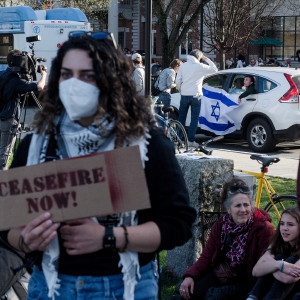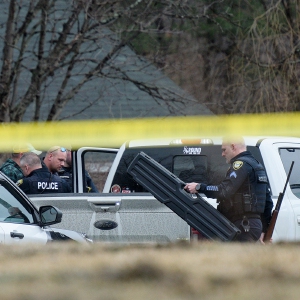With weeks to go, could lawmakers radically reimagine Vermont’s education finance system?
| Published: 04-11-2024 3:45 PM |
The Vermont House’s tax-writing committee rolled out a preliminary proposal this week that would radically reimagine education finance in the state.
The plan, written into the annual bill that helps set tax rates statewide, would provide school districts a base payment student, meaning voters would only consider any spending in excess of that base.
The Ways and Means Committee, led by Rep. Emilie Kornheiser, D-Brattleboro, plans to hash out many of the details by the end of the week. As written, the biggest changes, including the base or “educational opportunity payments,” would not take effect until fiscal year 2027, two budget cycles from now.
“I know it’s always a draft until we pass it,” Kornheiser said during a committee meeting Tuesday. “But it’s like a very draft, draft, draft,” she said, tacking on a few more “drafts” to the qualification.
The tax committee is looking at potentially wresting considerable power away from local voters as property taxpayers face estimated double-digit increases statewide.
Current projections, with a few legislative assumptions baked in, would increase the average homestead property tax bill by 15.46% and the average non-homestead tax bill — paid by businesses, rental property owners and second-homeowners — by 18.57%. Specific bill changes will vary widely from town to town.
The projected tax hikes reflect an estimated $192 million increase in education spending from the current year to next. That increase has fallen by about $40 million in the last month as school districts revised budgets in response to legislative action. State data suggests health care costs, construction, special education, disappearing federal money and increased salaries are all contributing significantly to the increases.
Tucked inside the annual yield bill, the plan outlines education financing changes for this year, next, and the year after.
Article continues after...
Yesterday's Most Read Articles
 Lebanon moves forward with plans for employee housing
Lebanon moves forward with plans for employee housing
 At Dartmouth, hundreds protest ongoing war in Gaza and express support for academic freedom
At Dartmouth, hundreds protest ongoing war in Gaza and express support for academic freedom
 Police break up protest at Dartmouth College, 90 arrested
Police break up protest at Dartmouth College, 90 arrested
 Man tied to Lebanon school lockdowns pleads not guilty to charges
Man tied to Lebanon school lockdowns pleads not guilty to charges
The plan would gradually transition Vermont to something resembling a foundation funding formula, a popular model used in other states, and would still rely on a statewide grand list. Newly calculated pupil weights created by previous legislation, which provide more money to schools for students that are more expensive to teach, would also continue.
The idea shares similarities with a plan outlined to VTDigger last month by Rep. Scott Beck, R-St. Johnsbury, a member of the ways and means committee.
For this year, few immediate fixes are contemplated. As initially written, the bill prohibits districts from drawing from the education fund in order to add money to capital reserves. On Wednesday, committee members debated the viability of that idea and whether to add language that would send any surplus money raised by districts in 2025 back into the statewide pot of money, but the feasibility of that idea is also unknown.
The current version of the bill would impose what’s known as a cloud tax by repealing an exemption on the sales tax for software accessed over the internet. That decision would raise a projected $20 million annually.
Next year, lawmakers would need to hash out more of the plan’s specifics if the state wanted to shift to the “educational opportunity payments.”
The legislation would also create “allowable growth percentages” for district budgets in the next two years — fiscal years 2026 and 2027 — increasing the tax liability for districts that spend beyond the growth rate, and allowing low-spending districts to increase their budgets slightly more than the highest-spenders.
At a press conference on Wednesday, Gov. Phil Scott called it “good news” that lawmakers were considering a plan that would address structural issues with education funding.
But Scott also called it “concerning” that the plan doesn’t address this year’s projected tax increases. He said his administration would issue a response acknowledging the strengths of the plan and the problems it sees with it.
Much about the plan remains in flux, perhaps most notably the size of the per-pupil payments, which will come from an analysis of what an adequate education costs in Vermont. The committee expects that number “any day now,” Kornheiser said Tuesday.
The committee members have also discussed a tax targeting short-term rentals, though the size of such a surcharge, and whether or not to include it at all, is an open question.
“We put a bunch of big ideas out into the world,” Kornheiser said Wednesday morning, telling her colleagues that the committee would continue “puzzling through” the bill.
“It’s fairly intense,” she said.

 Dartmouth graduate student-workers go on strike
Dartmouth graduate student-workers go on strike
